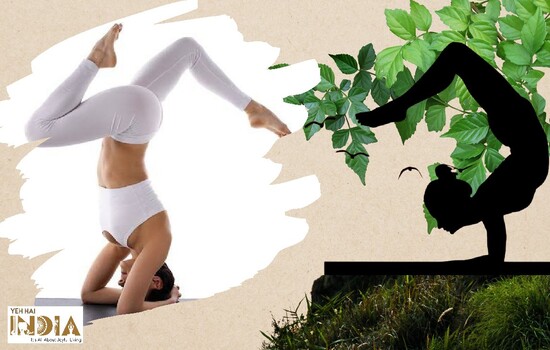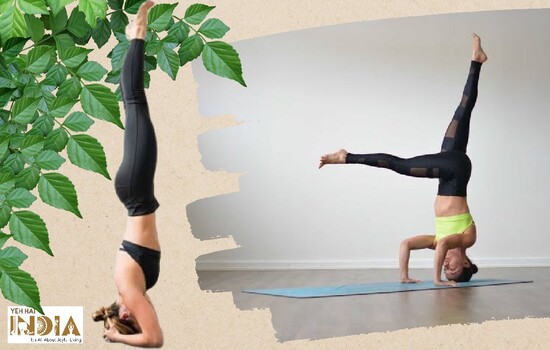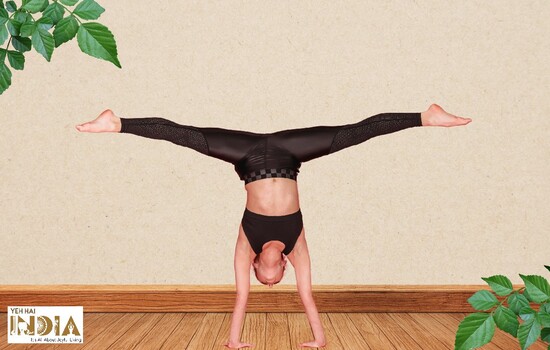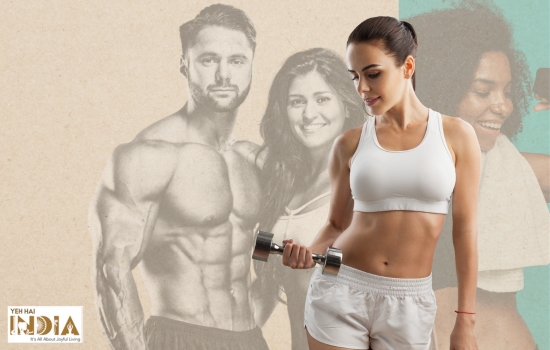Headstands have become a prominent part of yoga routine to achieve benefits like full body balance, flexibility and better coordination of muscles.
Headstands are not for the faint of heart, and they require a certain amount of strength and technique to do without injuring yourself. It is one of the poses that you must master in order to be labeled a true yogi.
The headstand, often known as the king of asana (the Sanskrit word for posture), is a more advanced yoga inversion.
Headstand yoga posture requires you to turn your body upside down so there are a few precautions that you need to take. It is also necessary to have fun.
It is extremely soothing to the neurological system and can be quite grounding because it is an inversion. It’s not a case of gripping something too tightly. It’s about entering a state of deep relaxation, tenderness, and childlike fun.
Why Do Headstands Yoga?

Headstands offer many health benefits. They calm the mind and relieve stress and depression. Headstands are great for the lymphatic system and also activate the pituitary and pineal glands.
The upper body, spine and core are strengthened with regular practice of headstands. They improve lung capacity and stimulate abdominal organs, boosting digestion.
If you’re a woman going through menopause, headstands can be extremely beneficial for you. And lastly, they’re great for headaches!
Recommended Story – Yoga For Weight Loss: Burn Calories The Yogic Way
Safety Precautions:

Headstands have numerous advantages, but they also have some drawbacks, such as neck, shoulder, and back injury or pain caused due to strain on the muscles located in these regions.
To accomplish it safely, you’ll need to take some precautions. This necessitates a certain level of strength, alignment, and flexibility.
DO NOT DO A HEADSTAND if you have degenerative disc disease, structural abnormalities in your back, or neck and shoulder problems.
Alignment should be practised – It’s critical to keep your spine and body in the appropriate position when doing a headstand.
Mountain pose, in which you stand straight up with your arms stretched overhead and toward your ears to train your neck and build strong muscles, is a good way to practise your alignment.
Balance your weight – The goal is to make your head weigh less than 10% of your total body weight. That means using the rest of your body, such as your arms, core, glutes, and legs, is critical.
Place yoga blocks under your forearms to relieve any pressure on your head and practise with less weight.
Keep your speed under control – It’s not a good idea to spring into this stance at breakneck speed. You have to take it leisurely going up and slow coming down. The weight and pressure in your spine and head will be reduced as a result.
How To Do A Headstand:

Step – 1:
Sit in Vajrasana. Place opposite hands at the inside base of your upper arms to determine the proper elbow width.
Step – 2:
As you place your elbows on your mat, keep them in this posture. Make a triangle with your forearms by bringing your hands together.
Step – 3:
Open your palms and thumbs by interlacing your fingers. Place the tips of your pinky fingers together to give your hands a more sturdy foundation. Inside your palms, place the top of your head on the mat.
Step – 4:
Straighten your legs and lift your hips. Bring your hips above your shoulders as you walk your feet toward your head. Bring your knees forward close to your chest. For a total of 5 seconds, stay in this position. Straighten your legs slowly.
Step – 5:
Bend your knees slowly to bring your ankles closer to your hips. Bend your knees into your chest slowly. For a few seconds, stay in this position. Lower your feet to the ground gently. For a few moments, rest in Child’s Pose.
Step – 6:
Relax and release tension in your neck, shoulders, and back. Sit back up in Vajrasana. After a headstand, don’t stand up right away. If blood starts to flow from your head when you stand up, slowly lower yourself back into a seated posture.
Step – 7:
If you want to get full benefits, ensure your shoulders are lifted off the ground and your cervical spine maintains its natural curve. This can help you lower your chances of suffering a cervical spine injury.
Important Note:
People with neck, spine, or shoulder problems, as well as those with hypertension, glaucoma, or cardiac problems, should avoid headstands entirely. It’s also not a good idea to try the pose if you’re pregnant.
If you have a medical issue or are unclear whether headstands (or inversion training in general) are appropriate for you, consult your physician before incorporating them into your routine.
Recommended Story – Face Yoga: 5 Exercises For A Youthful Looking Face
Modifications and Variations

You should be able to do a downward-facing dog with straight arms and no rounding of the upper back before attempting a headstand. You should also be able to hold a plank for an extended period of time and complete a dolphin pose without putting your head on the ground.
If you want to strengthen your arms in order to support your weight in this pose, use a yoga strap. This resistance will help you gain arm strength and keep your elbows from spreading. Before stepping into the posture, just attach a strap over your elbows at the base of your upper arms.
Place your palm against your face, starting with the base of your palm at the top of your nose, to identify the correct spot on the top of your head. Place your palm on the top of your head and press your middle finger into it.
This is the point at which your head will come into contact with the ground. Stimulate this area, then place it on the floor a few times to get a sense of how it feels.
Don’t get discouraged by failure!

Whether or not you can do a headstand does not make you a better or worse yogi. Yoga is all about skilled action, so as long as you’re making decisions with a strong sense of purpose and personal power, you’re doing it right.
It’s just as crucial how you approach each pose as it is to actually accomplish the pose. Even if you don’t do a headstand, it’s still yoga.
To build strength and flexibility in order to successfully hold a headstand, you can sign up for daily online yoga classes with Yog Love.
Taught by expert yoga teachers, these classes will help you become a better yogi and keep you on track with your fitness goals and also enable you to learn to eat healthy.
Make headstands a part of your regular exercising regime and allow yourself the freedom to lead a healthy way of living.
Also Read – 5 Yoga Mudras and Their Benefits For Overall Health










